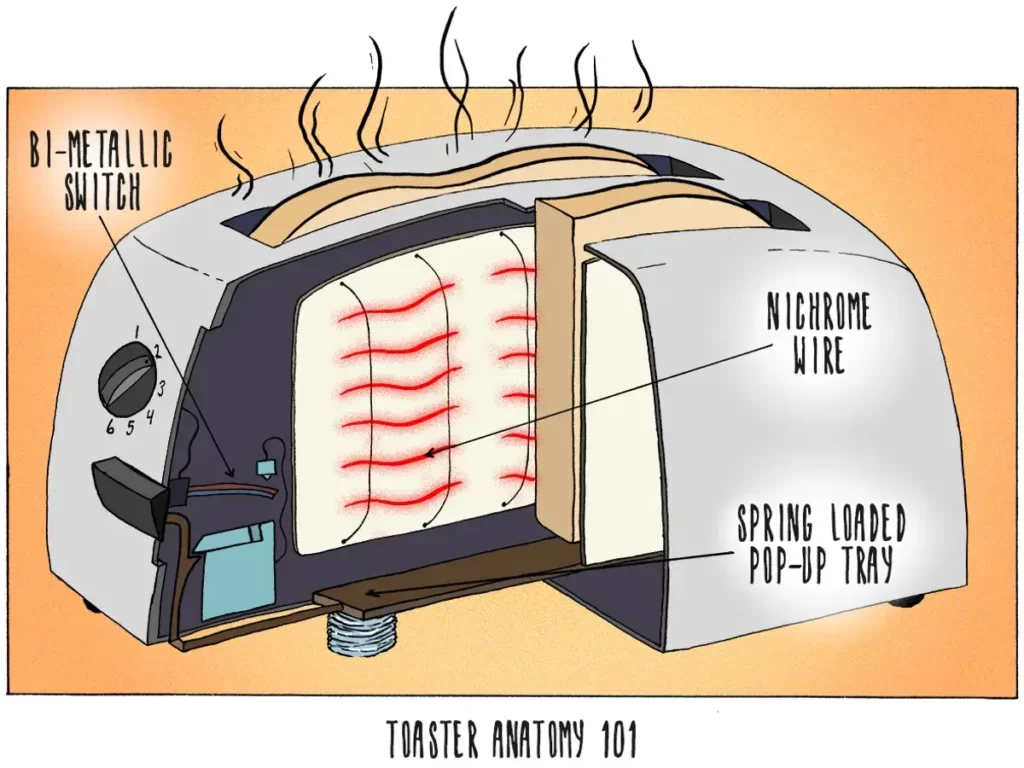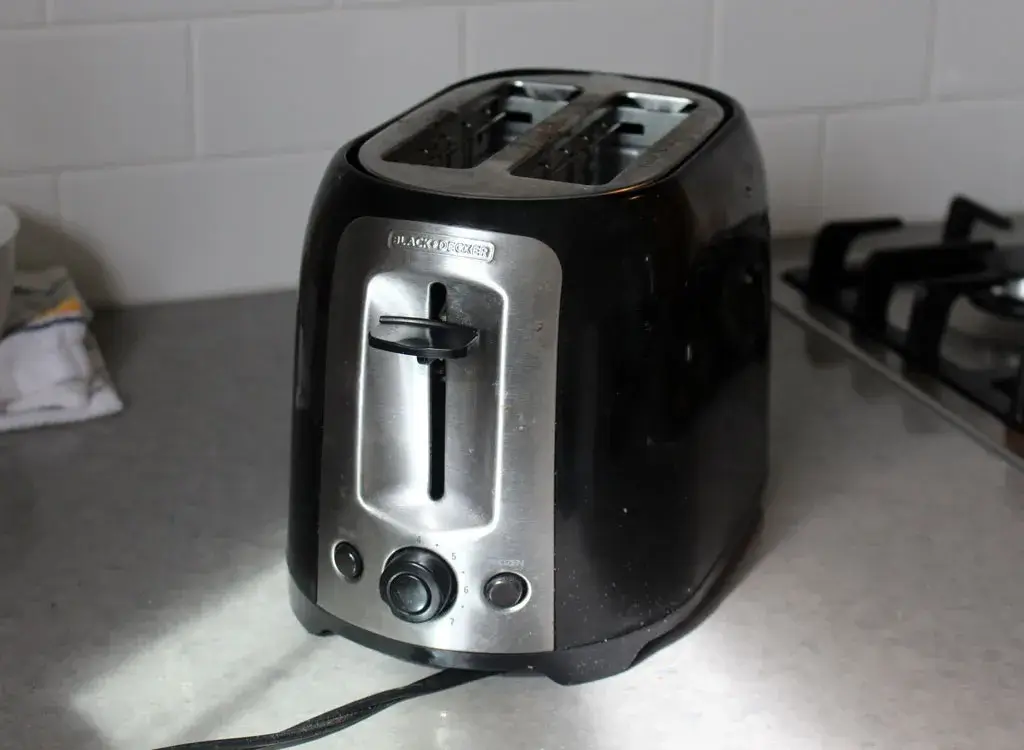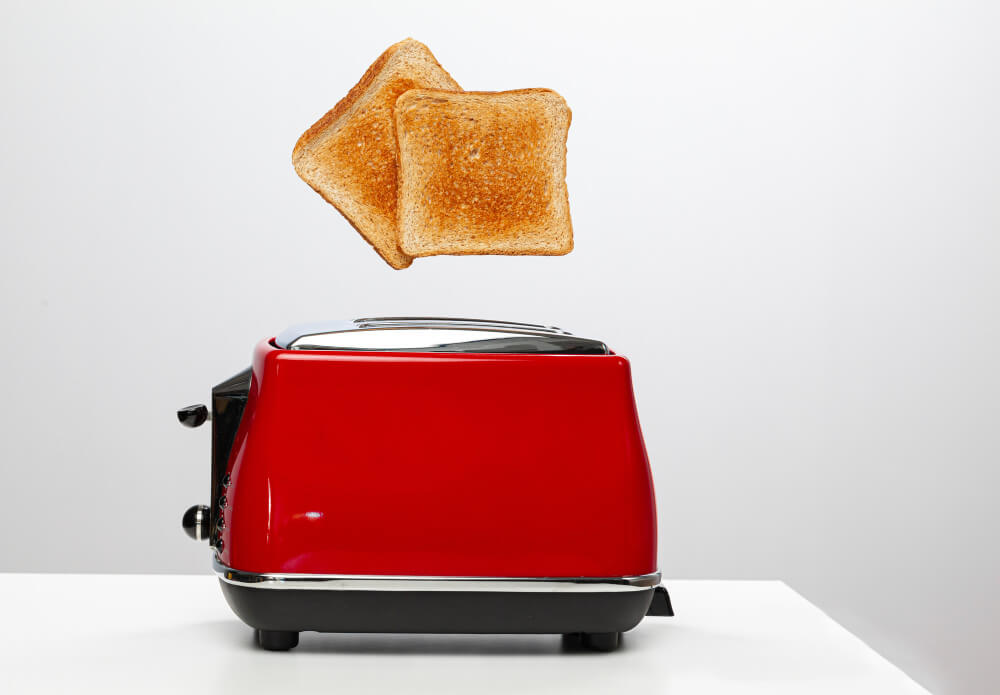Last Updated on August 10, 2023 By Emma W. Thomas
Toasters primarily use infrared radiation for toasting. Nichrome or other heating elements inside the toaster generate heat through electrical resistance, browning the bread’s surface. This method efficiently and evenly heats the bread for toasting.
What Type Of Heat Is Used In A Toaster?
Toasters are a must-have appliance in most households, making breakfast a breeze. While we often take them for granted, have you ever wondered what kind of heat is used in a toaster? Join us as we explore the fascinating world of toaster technology and discover the different types of heat employed in these handy kitchen devices.
- Quartz Heating Elements:
Quartz heating elements are commonly used in many modern toasters. These elements consist of thin quartz tubes filled with a heating coil. When electricity passes through the coil, it becomes hot and radiates heat, toasting your bread to perfection. The benefits of quartz heat include fast heating times and precise temperature control, ensuring your toast is just how you like it. - Nichrome Heating Elements:
Another widely used heating element in toasters is made from a nickel-chrome alloy called nichrome. These coils are wrapped around a mica sheet or ceramic insulator. When electricity passes through the nichrome wire, it heats up rapidly, creating intense heat. One advantage of nichrome heating elements is their ability to produce high temperatures quickly, allowing for faster toasting. - Infrared Heating Technology:
Recently, infrared heating technology has gained popularity in toaster manufacturing. Instead of using coils, infrared toasters utilize infrared light waves to heat the bread. This technology allows for even heat distribution, resulting in uniformly toasted slices. Infrared heat is also efficient and can reduce energy consumption compared to traditional heating elements. - Radiant Heat Elements:
Some toasters employ radiant heat elements to toast bread. These elements consist of a heating wire or ribbon, often wrapped around a mica sheet or located directly behind the bread slots. As electricity flows through the wire, it heats up, emitting radiant energy that toasts the bread. While not as common in modern toasters, radiant heat elements are still found in some models. - Other Considerations:
Aside from the type of heat, toasters often incorporate additional features to enhance the toasting experience. For instance, some models offer adjustable browning settings, allowing users to select their preferred toast shade. Others include convection heating, which uses a fan to circulate hot air, resulting in more even toasting. These extra features add versatility and convenience to your toasting routine.
What Is Thermal Radiation, And How Is It Used In A Toaster?

Radiation is the emission or transmission of energy (heat) through space or through a material medium. In simpler terms, thermal radiation is the transfer of heat from an object with a higher temperature to an object with a lower temperature when the objects are not in direct physical contact with each other. The object with a higher temperature is called a thermal radiator.
An electric toaster works by converting electric energy into heat energy, which in turn is responsible for toasting bread. This is achieved by the inner circuitry of an electric toaster.
If you look inside your toaster, you will see several strings of metal facing the area where you put your bread slices to be toasted. These metal strings are used as thermal radiators in the toaster. When you plug your toaster into an electric socket, the electricity passes through these metal strings. These metal strings are connected but are spread in such a way that they cover the entire surface so that the bread slice can be toasted evenly. The electricity is converted into heat, and the metal strings start glowing. When the metal becomes red hot, it starts emitting heat in the form of radiation. This heat is directed towards your bread slices to make them toast.
The process is faster when the wires are thinner, and a greater amount of electricity is passed through them. The constant emission of heat through these radiators on both sides of the bread slice makes sure the bread is toasted evenly on both sides. This makes sure that you do not need to flip your bread to cook it on both sides.
Most Of The Toasters Have Two Additional Features.
| Features | Benefits Offered |
| i) A spring-loaded tray | I) When the toast is ready, take it out of the toaster to avoid further cookinghttps://homeeon.com/microwave-ovens-get-hot-on-the-inside-and-outside/. II) It avoids the need to take it out manually. III) It is also a safer option as the inside parts of a toaster are very hot, and you should avoid touching the metal strings. |
| ii) A timer | I) Turns off the toaster after a specific time to avoid the toast getting burnt. II) Releases the spring-loaded tray to pop out the toast. |
Modern toasters can also use a thermostat. A thermostat is an electrical or mechanical device that turns a circuit off when it reaches a specified temperature. The controller can shift the placement of a thermostat in a circuit and can help control the temperature.
How Is Infrared Radiation Created In A Toaster?
The most common way a toaster creates infrared radiation is by using nichrome wires wrapped on a mica sheet.
Nichrome is an alloy of chromium and nickel. It contains 80% nickel mixed with 20% chromium. These metal wires are resistant to heat and electricity. So, even a small wire can get quite hot and start emitting heat. The heat resistance helps the metal to endure such high temperatures. This method of heating is also called Joule heating as it relies on the resistance of a metal to withstand high temperatures. Nichrome also has a very high melting point. Another advantage of using nichrome is that it is easier to shape it, and it does not expand much.
Nichrome wires are a better alternative for a toaster than iron and copper wire. Copper wires are not as resistant to electricity and heat as nichrome wires. And, iron wires would rust rapidly at high temperatures. Hence, they are not suitable for a toaster that requires the wires to be red hot to start emitting heat radiations. Nichrome wires, on the other hand, do not oxidize when subjected to high temperatures and are suitable for an electric toaster.
Two mica sheets wrapped in nichrome wires are placed in a toaster creating a gap of a couple of inches to fit in the slices of bread. When the bread is placed inside a toaster, the electricity passes through these wires, and the molecular collision makes the metal extremely hot.
The heating elements on both sides will dry and char the bread, toasting it evenly. When the bread is toasted completely, it can be taken out of the toaster or a toaster with a spring-loaded tray will itself push the slices out.
Can The Radiators In A Toaster Be Hazardous?

Yes, the radiator or the metal strings used in the toaster can be hazardous and even life-threatening if not dealt with caution.
The radiators in a toaster are used to convert electric energy to thermal energy. When the toaster is plugged, in and the circuit is complete, a tremendous amount of energy flows through these radiators. You should never try to touch the radiators/ metal wires in a toaster when plugged in. Touching it with any metal or any other object can be dangerous and even fatal in many cases. If you have any bread crumbs stuck and you need to take them out, make sure to unplug the toaster before doing so.
Conclusion
This is how a toaster uses electricity to convert it into thermal radiation and toasts bread. The energy used by a toaster is kinetic energy, and the method of heating is called thermal radiation. The heat generated is passed to the bread slice. However, no physical medium is involved. The toasters also include other features like a spring-loaded tray and a timer or a thermostat to make the process easier.
References:
https://home.howstuffworks.com/toaster1.htm
https://thisanswer.com/is-toaster-heat-convection-or-radiation/
Emma is a graduate of Domestic Science or Family and Consumer Sciences (Home Economics) from the University of Wisconsin. She has 7 years of experience Working with the strategic section of BestBuy and now writing full-time for Homeeon.
From Managing the Home, Interiors, Cleaning, and Exteriors to Gardening and everything about Making A Home Liveable – is her passion and this Homeeon is the result of this.
Emma loves decorating her home with the best stuff found online. She cares about quality over anything and writes reviews about them here in Homeeon. Get in touch with her over Pinterest.
Keep reading her blogs.

